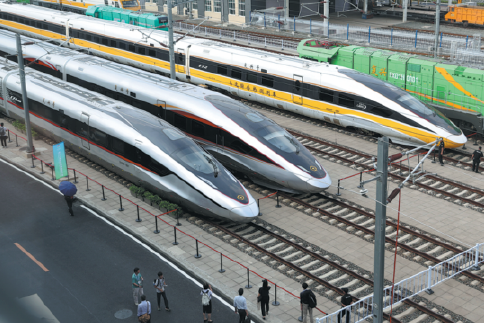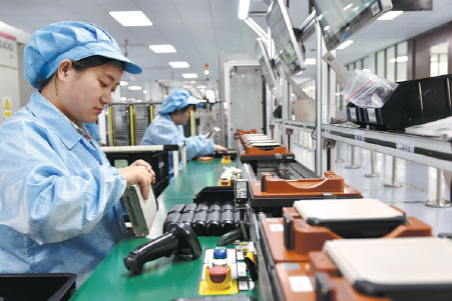Robotaxi partnerships speed up global growth


The global robotaxi market is poised for rapid growth as strategic alliances between major technology companies and automakers move forward, propelled by advancements in autonomous driving technology.
Uber and Baidu plan to launch robotaxis on the ride-sharing platform in markets outside the United States and Chinese mainland through a multiyear partnership, the two sides said last week.
Baidu's sixth-generation autonomous vehicles will be available on the Uber app in Asia and the Middle East later this year. Thousands of vehicles will be deployed as part of the partnership, and future rollouts will also include Europe and Oceania, according to Uber.
Baidu, which runs one of the largest fleets of robotaxis in China, is the latest Chinese autonomous driving technology company to partner with Uber to launch its services overseas. Its robotaxi service, Apollo Go, has provided more than 11 million public rides in more than a dozen cities globally, exceeding the 10 million rides by Alphabet's Waymo as of late May. Baidu has also been eyeing an expansion of its services in Switzerland, Singapore and Malaysia.
According to Bloomberg News, other Chinese firms like US-listed WeRide, Pony.ai, and Momenta have struck agreements with Uber to offer robotaxis on the platform in some European and Middle Eastern markets in the years ahead.
While international collaborations such as Uber and Baidu's partnership signify global ambitions, domestic competition within China's autonomous driving sector is intensifying, showcasing advanced technological innovations.
On July 14, BAIC BluePark New Energy announced the start of mass production and public road testing of the Arcfox Alpha T5 robotaxi, equipped with Pony.ai's seventh-generation autonomous driving system in Shenzhen.
According to the automaker, this vehicle features Level 4 autonomous driving capabilities and is a milestone in its strategic partnership with Pony.ai.
In November 2024, the two companies signed an agreement to develop a fully driverless robotaxi based on the Arcfox Alpha T5 SUV, leveraging Pony.ai's cutting-edge autonomous driving hardware and software.
The Alpha T5 robotaxi features 34 sensors across six categories, including nine LiDAR units, millimeter-wave radars, and wide-angle cameras. It provides a maximum detection range of 650 meters and delivers computing power of up to 1,016 Trillions of Operations Per Second.
Thanks to extensive collaboration, BAIC highlights that the Alpha T5 robotaxi has achieved a remarkable 70 percent cost reduction while ensuring the highest safety standards throughout component procurement, pre-assembly, and final assembly stages.
According to a local media report, Pony.ai's seventh-generation autonomous driving system brings two more critical breakthroughs: it is the first worldwide to use 100 percent automotive-grade components, and incorporates a modular design, aiding rapid adaptation across various vehicle models.
These advancements underscore both technological progress and economic practicality, indicating that mass robotaxi operation becomes viable when operating costs per kilometer drop below those of human-driven vehicles.
The report also said that sustainable operations require each robotaxi to run more than 9,000 kilometers monthly, approximately 30 percent higher than the average monthly mileage of human-driven taxis in Shenzhen.
Commercial operation of the Alpha T5 robotaxi is underway in major Chinese cities such as Beijing and Guangzhou. Pony.ai plans to deploy 1,000 driverless robotaxis this year, aiming to achieve operational breakeven on a per-vehicle basis.




































